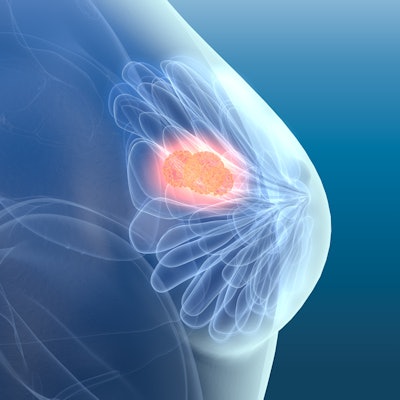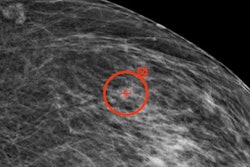
Can women in their early 70s receive breast screening less frequently? A group from Italy tested a three-year screening interval in these women, concluding that the proposal needs more investigation. The team published its results on 6 August in European Radiology.
Researchers led by Dr. Lauro Bucchi from the Romagna Cancer Institute in Forlì did not find significant changes in tumor stage and molecular subtype between the second and fifth year for women who had a five-year follow up between breast cancer screenings. Instead, they found that the number of interval cancers was less than expected over five years of observation.
"We believe that it is reasonable to consider appropriate for women aged 70 to 74 the longest possible interval, provided that it is associated with a proportional incidence of interval breast cancer not higher than that considered to be acceptable for women aged 50 to 69 in the second interval years, that is, 0.50," wrote the authors, who are based in Italy's northern Emilia-Romagna region.
The European Commission Initiative on Breast Cancer Guideline Development Group recommends that asymptomatic women ages 70 to 74 at average risk of breast cancer be offered mammography screening. However, the recommendation for triennial screening for this group of women is based on "very weak evidence," the researchers said.
"There is a need for more data on interval cancers in different screening intervals as there is currently very little knowledge on this, and women in the older age groups need to have a longer follow-up in order to see how many breast cancers are detected annually," they wrote.
The team wanted to evaluate women who had their last biennial screening mammography at ages 68 and 69 that was followed up for five years to determine the annual proportional incidence of interval breast cancer.
The group looked at data from 118,370 Italian women who had their last mammography between 1997 and 2008. They found there were 298,658 woman-years at risk with 371 interval cancers versus 988.8 expected cancers.
In the first, second, third, fourth, and fifth interval year, the proportional incidence was 0.09, 0.32, 0.60, 0.75, and 0.81 respectively. However, the 95% confidence interval of the third-year proportional incidence of interval cancer (0.49-0.73) included 0.50, the maximum limit considered acceptable for women aged 50 to 69. This finding led the team to say triennial screening merits more research.
The researchers said their data can be used to inform larger studies to confirm or refute the strong decrease in the proportion of triple-negative cancers from the first to the fifth interval year.
"This trend could result from aging and would be of considerable clinical relevance for the choice of the optimum screening interval," they said.



















